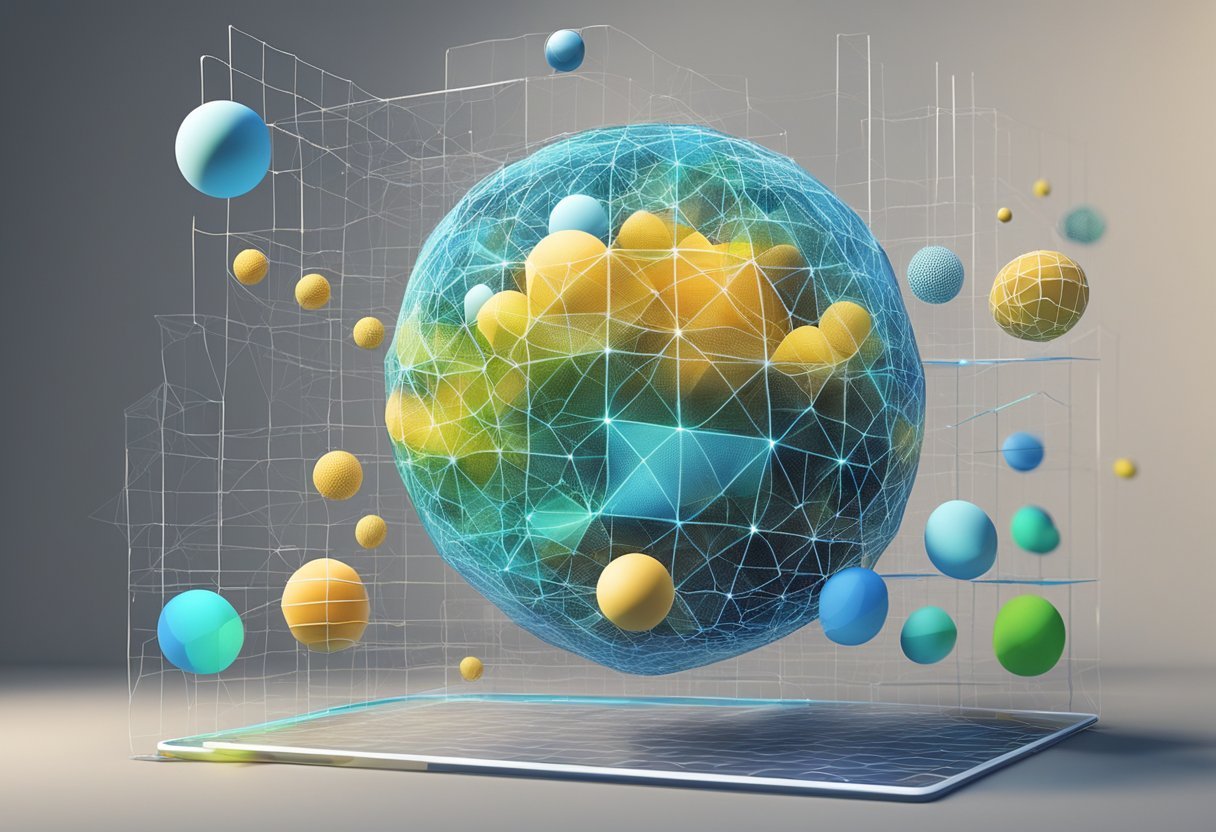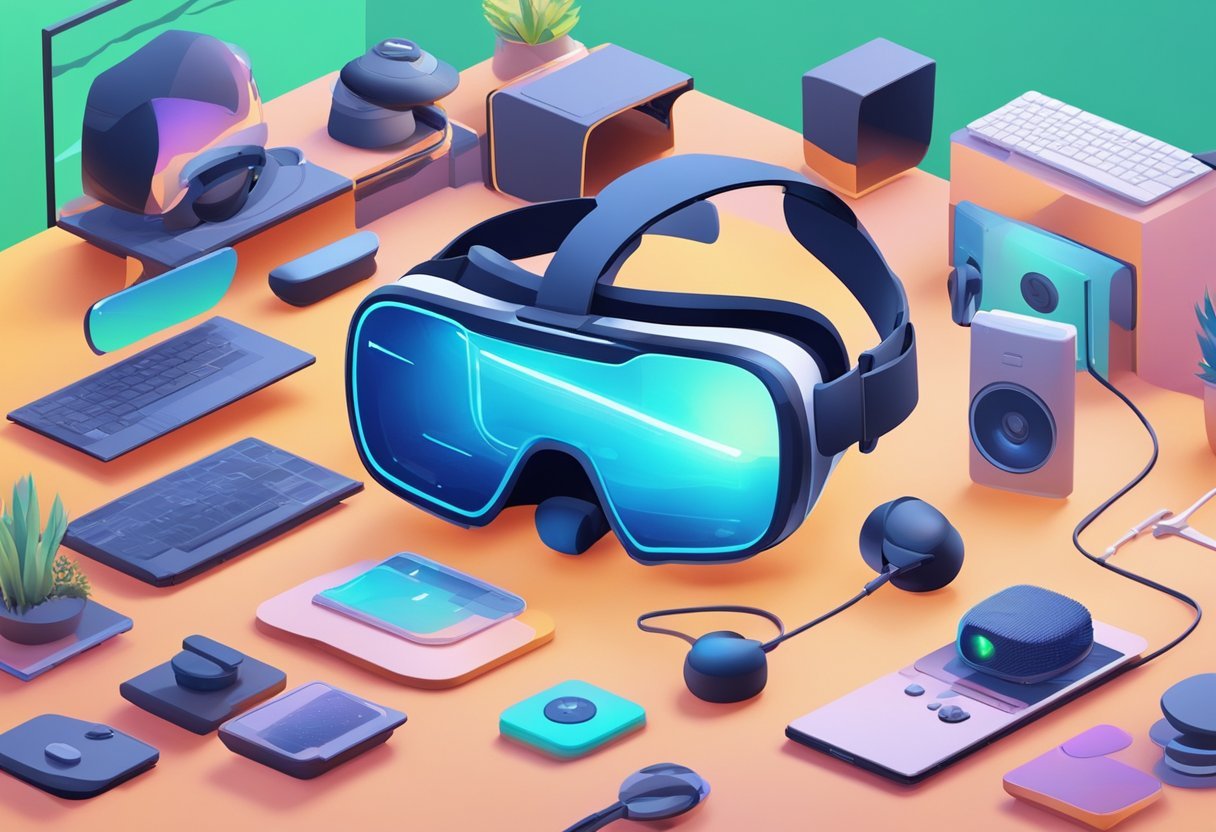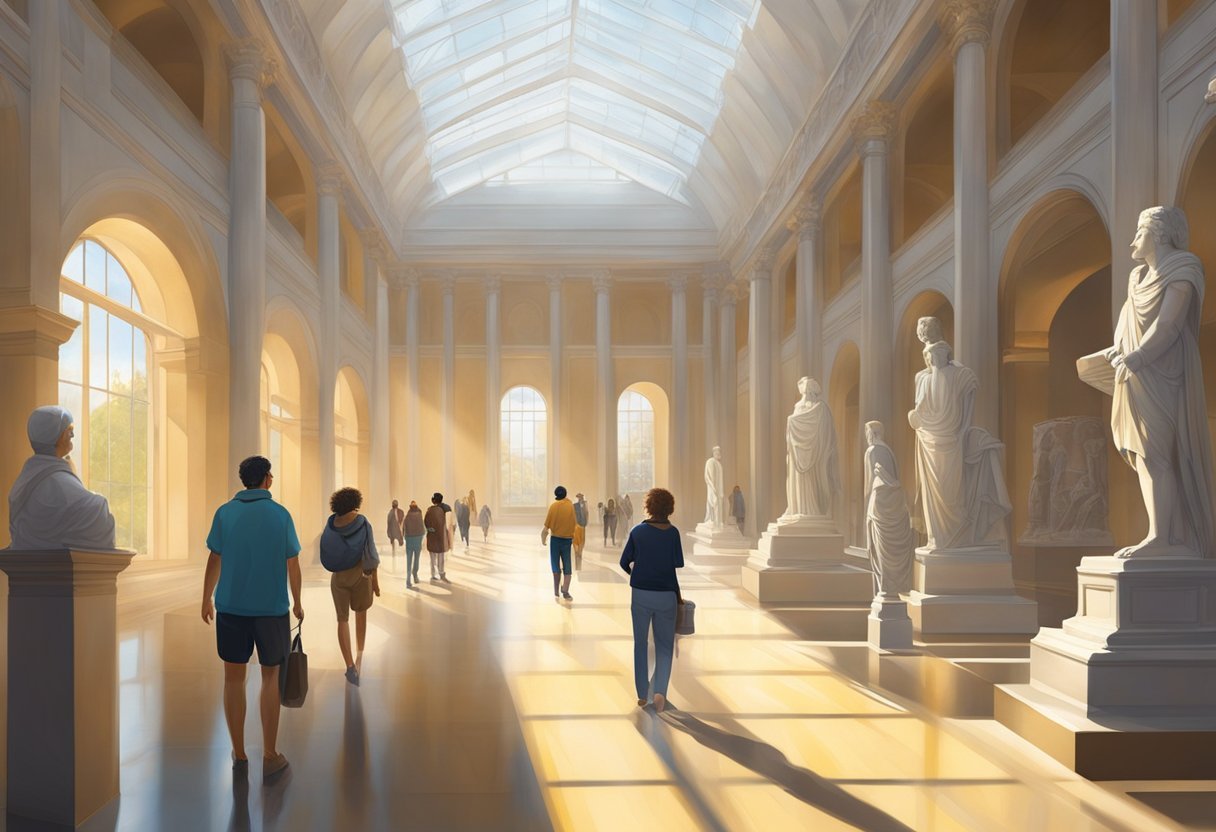Augmented reality (AR) is a technology that overlays digital information on the real world, creating an immersive experience for the user. One of the essential components of AR is the mesh, which plays a crucial role in creating realistic virtual environments. The mesh is a detailed map or model of the user’s surroundings, created by capturing and analyzing various data points. So what does the mesh do in augmented reality?
The mesh is created by capturing and analyzing data from cameras and sensors, which include depth information, surface textures, lighting conditions, and object positions. One of the primary functionalities of the mesh is to provide accurate tracking and mapping of the user’s surroundings. By creating a detailed map of the environment, the mesh enables the AR device to understand the dimensions and contours of the surroundings, facilitating precise object placement and accurate spatial registration.
Key Takeaways
- The mesh is a detailed map or model of the user’s surroundings, created by capturing and analyzing various data points.
- The mesh provides accurate tracking and mapping of the user’s surroundings, enabling the AR device to understand the dimensions and contours of the environment.
- The mesh plays a crucial role in creating realistic virtual environments in AR.
Understanding Mesh in AR
Mesh is a fundamental component of augmented reality (AR) that plays a crucial role in creating an immersive and interactive experience for users. In simple terms, a mesh is a digital 3D representation of the real world that overlays virtual objects onto physical environments. It is created using a process called mesh creation, which involves mapping the physical world and creating a 3D model of it.
The role of mesh in AR is to provide a way to reduce the complexity of a digital 3D model while preserving its fundamental structure. This is achieved through a process called mesh decimation, which involves reducing the number of polygons in a model without changing its overall shape. By reducing the complexity of a model, mesh decimation makes it easier to render virtual objects on top of physical environments, creating a seamless AR experience for users.
Mesh Creation and Mapping
Mesh creation is a critical process in AR that involves mapping the physical world and creating a 3D model of it. This process is typically done using a combination of depth sensing, computer vision, and simultaneous localization and mapping (SLAM) technologies.
Depth sensing is used to create a 3D map of the physical world by measuring the distance between objects and the camera. This information is then used to create a point cloud, which is a collection of 3D points that represent the physical environment.
Computer vision is used to identify and track features in the physical environment, such as corners and edges. This information is then used to create a 3D mesh of the physical environment.
SLAM technology is used to combine the data from depth sensing and computer vision to create a 3D model of the physical environment. This process involves tracking the camera’s movement in real-time and using this information to update the 3D model as the camera moves.
Mesh is a crucial component of AR that plays a critical role in creating an immersive and interactive experience for users. By providing a way to reduce the complexity of a digital 3D model while preserving its fundamental structure, mesh makes it easier to render virtual objects on top of physical environments, creating a seamless AR experience for users.
Function of Mesh in Augmented Reality
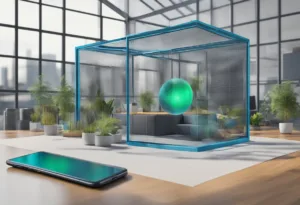
The mesh is a crucial element of augmented reality (AR). It refers to a three-dimensional representation of the real-world environment. This representation is essential for AR devices and applications to understand and interact with the physical world accurately.
The mesh helps the AR device or application understand the shape and layout of the user’s surroundings. It can spatially map the environment, allowing virtual objects to be anchored and interact with the real world accurately. By capturing and tracking the geometry and textures of real-world objects, the mesh provides a stable foundation for virtual items to anchor and interact with their surroundings. This connection allows users to experience a realistic and intuitive merging of digital content and real life.
Mesh decimation is an essential element of augmented reality (AR) and 3D modeling, providing a way to reduce the complexity of a digital 3D model while preserving its fundamental structure. This process helps in reducing the computational resources needed to render the virtual objects on the real-world environment.
The mesh is an essential component of augmented reality, and it helps in creating an immersive and interactive experience for users. It provides a stable foundation for virtual objects to anchor and interact with the real world accurately.
Interactivity and Realism in AR
As mentioned earlier, the mesh plays a crucial role in creating an immersive experience for users in augmented reality. One of the key ways it does this is by enhancing user interaction with digital content.
Enhancing User Interaction
The mesh allows AR systems to detect and respond to user interactions, such as hand gestures or physical objects. This feature enables users to interact with digital content in real-time, creating a more natural and intuitive experience. For example, users can manipulate virtual objects with their hands, or use physical objects to trigger digital responses.
Moreover, the mesh contributes to the realism of the experience by enabling realistic object placement.
Realistic Object Placement
The mesh enables virtual objects to be hidden or blocked by real-world objects, creating a more realistic experience. This feature is known as occlusion, and it enhances the perception of depth and realism in augmented reality. For example, a virtual object can be placed behind a real-world object, making it appear as if it is actually behind it.
The mesh is a critical component of augmented reality that enables interactivity and realistic object placement. By allowing users to interact with digital content in real-time and enhancing the perception of depth and realism, the mesh creates a more immersive experience for users.
AR Devices and Technology
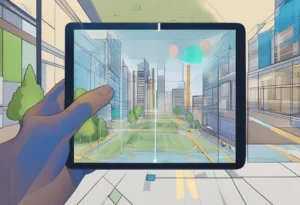
Augmented Reality (AR) technology has come a long way since its inception. AR devices have evolved from bulky headsets to sleek and portable devices. AR technology has also improved to provide more interactive and immersive experiences to users.
Hardware Enabling AR Mesh
AR devices use cameras and sensors to capture the user’s surroundings and create an AR mesh. The mesh is a 3D representation of the real world that allows virtual objects to be placed in the real world. The hardware used in AR devices is critical in creating an accurate and stable AR mesh.
Modern AR devices are equipped with high-resolution cameras that capture the user’s surroundings in real-time. These cameras are also capable of capturing depth information, which is essential in creating an accurate AR mesh. The sensors used in AR devices, such as accelerometers and gyroscopes, help in tracking the device’s position and orientation, which is necessary for creating a stable AR mesh.
Software and Performance
AR technology relies heavily on software to create an accurate and stable AR mesh. The software used in AR devices is responsible for analyzing the data captured by the device’s hardware and creating a 3D representation of the real world.
The software used in AR devices is also responsible for rendering virtual objects and overlaying them on the real world. The performance of AR devices is critical in providing an immersive and interactive experience to users. AR devices must be capable of rendering virtual objects in real-time and overlaying them seamlessly on the real world.
AR devices use a combination of hardware and software to create an accurate and stable AR mesh. The hardware used in AR devices is critical in capturing the user’s surroundings and creating an accurate AR mesh. The software used in AR devices is responsible for analyzing the data captured by the device’s hardware and rendering virtual objects. AR technology has come a long way, and modern AR devices provide immersive and interactive experiences to users.
Applications of Mesh in AR
Augmented Reality (AR) has rapidly gained popularity in various sectors, including gaming, education, entertainment, healthcare, training, and retail. It has become an essential tool in these sectors, providing a unique and interactive experience for users. The mesh plays a crucial role in AR applications, enabling the accurate placement and interaction of virtual objects in the real world. Here are some of the applications of mesh in AR:
Gaming and Entertainment
AR gaming has become increasingly popular in recent years, and the mesh plays a significant role in creating a realistic gaming experience. The mesh is used to create interactive objects and surfaces, detect and respond to user interactions, and create a physics-based model of the environment, enabling realistic object behavior. With the help of mesh, AR gaming has become more immersive and engaging, providing users with a unique gaming experience.
Educational and Healthcare Advancements
AR has revolutionized the education and healthcare sectors, providing an interactive and engaging experience for students and patients. The mesh is used to create interactive educational content, enabling students to learn complex concepts in a fun and engaging way. In healthcare, AR is used to create interactive simulations, providing doctors and medical professionals with a better understanding of complex medical procedures and treatments.
Industrial and Retail Use Cases
AR has also become an essential tool in the industrial and retail sectors. The mesh is used to create interactive product demonstrations, enabling customers to visualize products in real-time before making a purchase. In the industrial sector, AR is used to create interactive training simulations, providing employees with a safe and engaging way to learn complex procedures and processes.
The mesh plays a crucial role in AR applications, enabling the accurate placement and interaction of virtual objects in the real world. AR has become an essential tool in various sectors, including gaming, education, entertainment, healthcare, training, and retail, providing users with a unique and interactive experience.
Challenges and Future of Mesh in AR
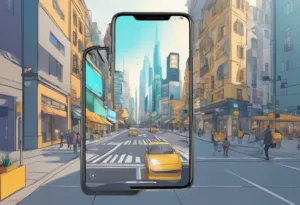
Technical Limitations and Privacy
Mesh in augmented reality is a crucial component that enables the overlay of virtual objects onto the physical world. However, there are technical limitations that need to be addressed to improve the accuracy and reliability of mesh in AR. One of the significant challenges is the processing power required to generate high-quality meshes in real-time. This challenge is further compounded by the limited processing power of mobile devices, which are the primary platforms for AR applications.
Another critical challenge that needs to be addressed is privacy concerns. Mesh in AR requires the collection of a significant amount of data, including images and videos of the physical environment. This data collection raises privacy concerns, as users may not be comfortable with the collection and storage of their personal information. Therefore, AR developers need to address these privacy concerns by implementing robust data protection measures to ensure that user data is secure.
Innovations and Future Prospects
Despite the technical limitations and privacy concerns, mesh in AR has the potential to revolutionize the way we interact with the physical world. As the technology continues to evolve, there are several innovations that could enhance the capabilities of mesh in AR. For example, advancements in machine learning and computer vision could enable the creation of more accurate and detailed meshes in real-time.
Furthermore, the future prospects of mesh in AR are promising. With the increasing adoption of AR technology, there is a growing demand for more advanced and sophisticated AR applications. This demand is driving innovation in the AR industry, with developers exploring new ways to leverage mesh technology to create more immersive and engaging AR experiences.
Mesh in AR is a critical component that enables the overlay of virtual objects onto the physical world. While there are technical limitations and privacy concerns that need to be addressed, the future prospects of mesh in AR are promising. As the technology continues to evolve, we can expect to see more advanced and sophisticated AR applications that leverage mesh technology to create more immersive and engaging experiences.
Frequently Asked Questions
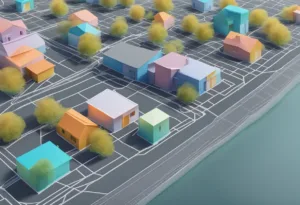
How does the mesh enhance the user experience in augmented reality?
In augmented reality, the mesh plays a crucial role in enhancing the user experience. The mesh technology enables the user to interact with virtual objects in a real-world environment, creating an immersive and interactive experience.
The mesh helps to create a more realistic and accurate representation of the virtual objects in the real world, which enhances the user experience significantly. It also enables users to interact with virtual objects in a more natural and intuitive way, which makes the experience more engaging and enjoyable.
What role does mesh play in creating immersive environments in AR?
The mesh plays a vital role in creating immersive environments in augmented reality. It is responsible for creating a 3D representation of the real-world environment, which is used to overlay digital information, such as images, videos, and 3D models.
This 3D representation is crucial for AR devices and applications to understand and interact with the physical world accurately. The mesh technology also enables AR devices to track the user’s movements and adjust the virtual objects accordingly, creating a more immersive experience.
In what ways does mesh technology contribute to the accuracy of augmented reality?
Mesh technology contributes significantly to the accuracy of augmented reality. It enables AR devices and applications to understand and interact with the physical world more accurately, which is essential for creating a seamless and immersive experience.
The mesh technology provides a 3D representation of the real-world environment that is used to overlay digital information, such as images, videos, and 3D models. This 3D representation is used to track the user’s movements and adjust the virtual objects accordingly, creating a more accurate and realistic experience.
How does the concept of mesh in AR differ from its application in virtual reality?
The concept of mesh in AR differs from its application in virtual reality in several ways. In augmented reality, the mesh is used to create a 3D representation of the real-world environment, which is used to overlay digital information.
In contrast, in virtual reality, the mesh is used to create a 3D representation of the virtual environment. The mesh technology in AR is also used to track the user’s movements and adjust the virtual objects accordingly, while in VR, the mesh is used to create a virtual environment that the user can interact with.
What are the technical requirements for implementing mesh in augmented reality systems?
The technical requirements for implementing mesh in augmented reality systems vary depending on the specific application. However, some of the essential requirements include a 3D scanning device, a powerful computer or mobile device, and software that can process and render the 3D data.
The 3D scanning device is used to capture the real-world environment and create a 3D representation of it. The powerful computer or mobile device is used to process and render the 3D data, while the software is used to overlay digital information onto the 3D representation.
Can you explain the interaction between mesh and mixed reality technologies?
Mixed reality technologies combine elements of both augmented reality and virtual reality to create a more immersive and interactive experience. The mesh technology plays a crucial role in mixed reality by providing a 3D representation of the real-world environment that is used to overlay digital information.
The mesh technology enables the user to interact with virtual objects in a real-world environment, creating a more immersive experience. Overall, the interaction between mesh and mixed reality technologies is essential for creating a seamless and engaging experience for users.

